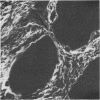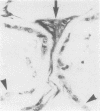Abstract
The distribution of fibronectin (FN) and collagen type III (IIIC) have been compared in a series of epithelial neoplasms from the gastrointestinal tract and salivary gland. The difficulty of distinguishing between FN of epithelial and fibroblastic origin is emphasised and evidence is presented for the validity of this distinction. In carcinomas FN was sometimes, but not invariably, lost from epithelial cell surfaces. Both FN and IIIC were increased in reactive connective tissue stroma. It is concluded that loss of cell surface FN is unlikely to be a useful diagnostic marker for malignancy, but that the occurrence of this phenomenon in vivo as in vitro indicates that it is biologically significant.
Full text
PDF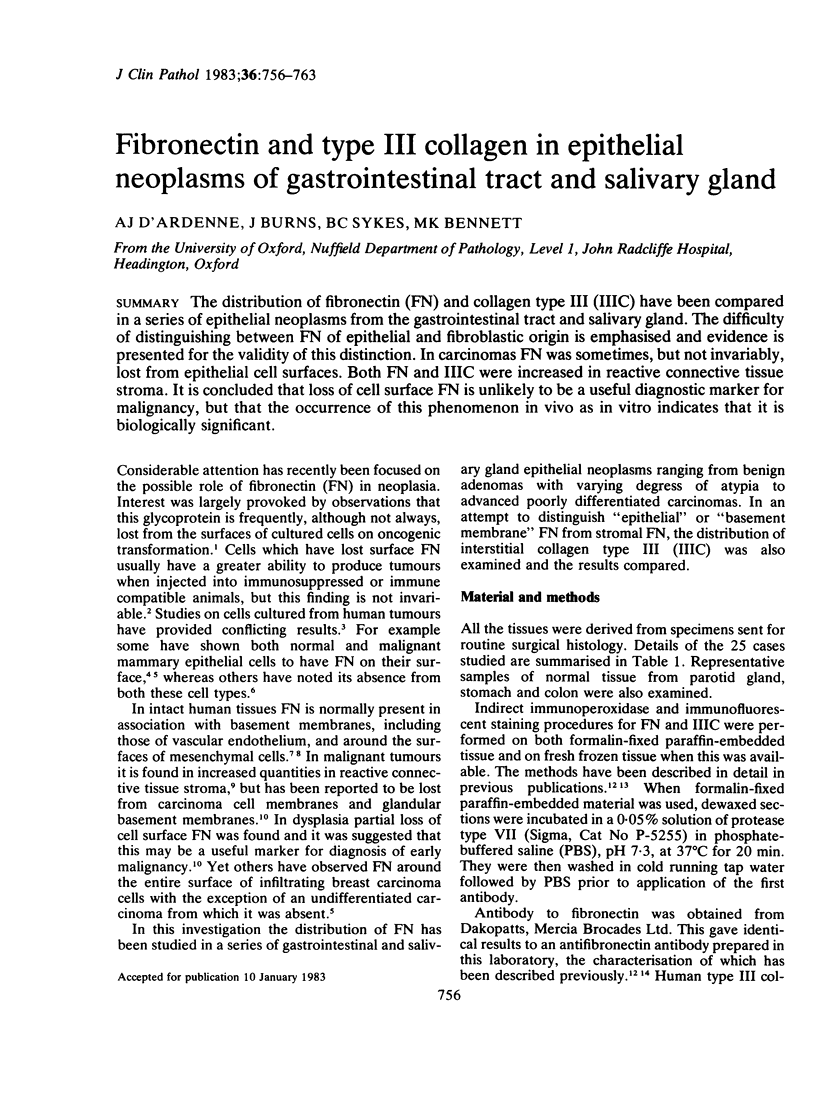
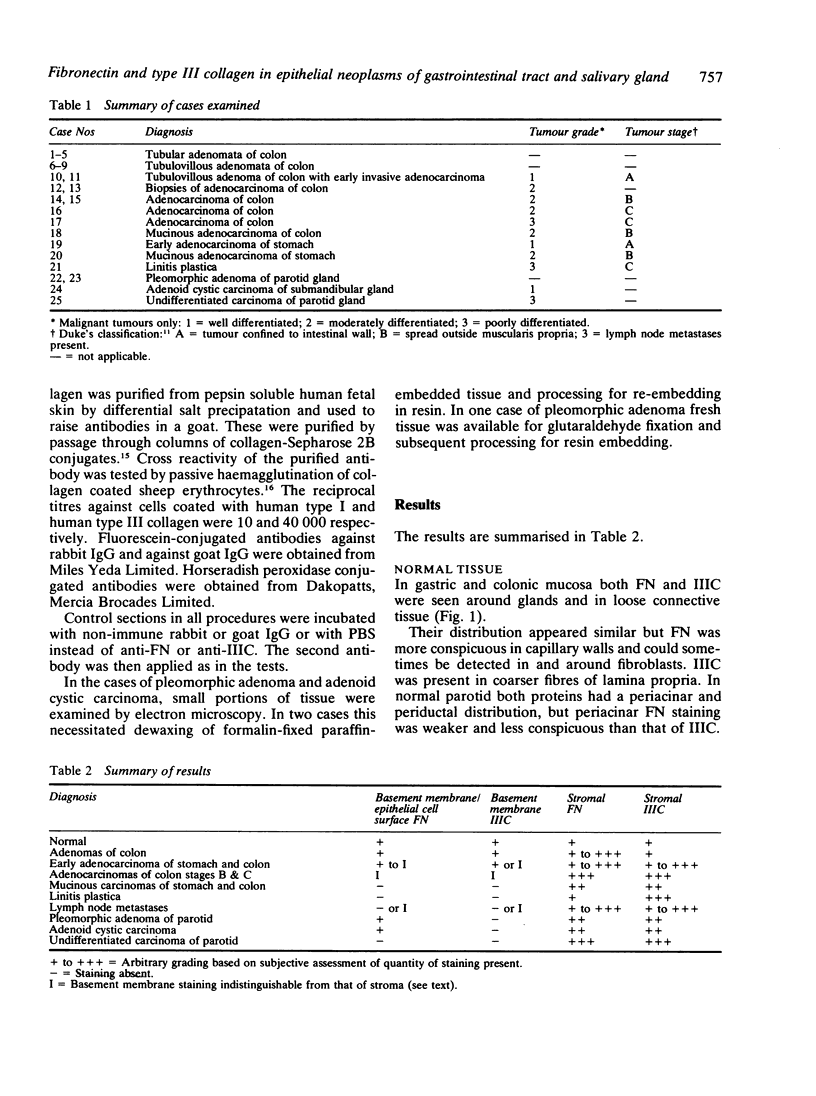
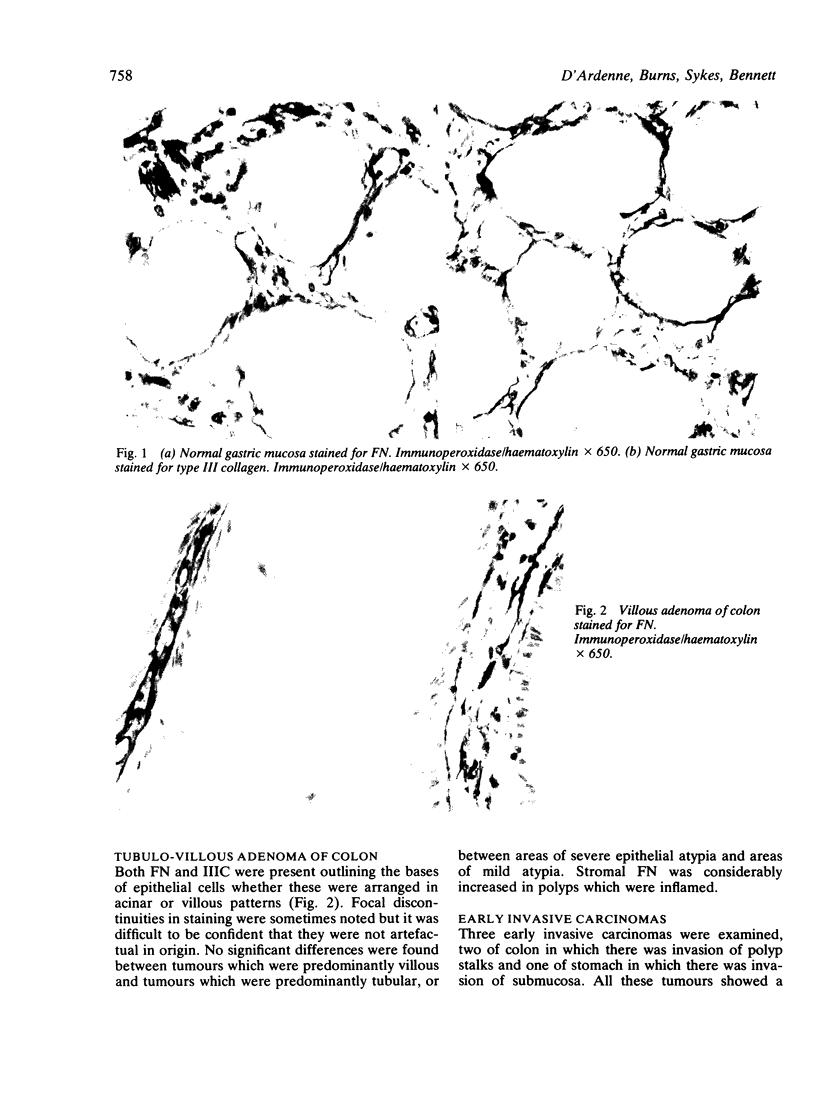

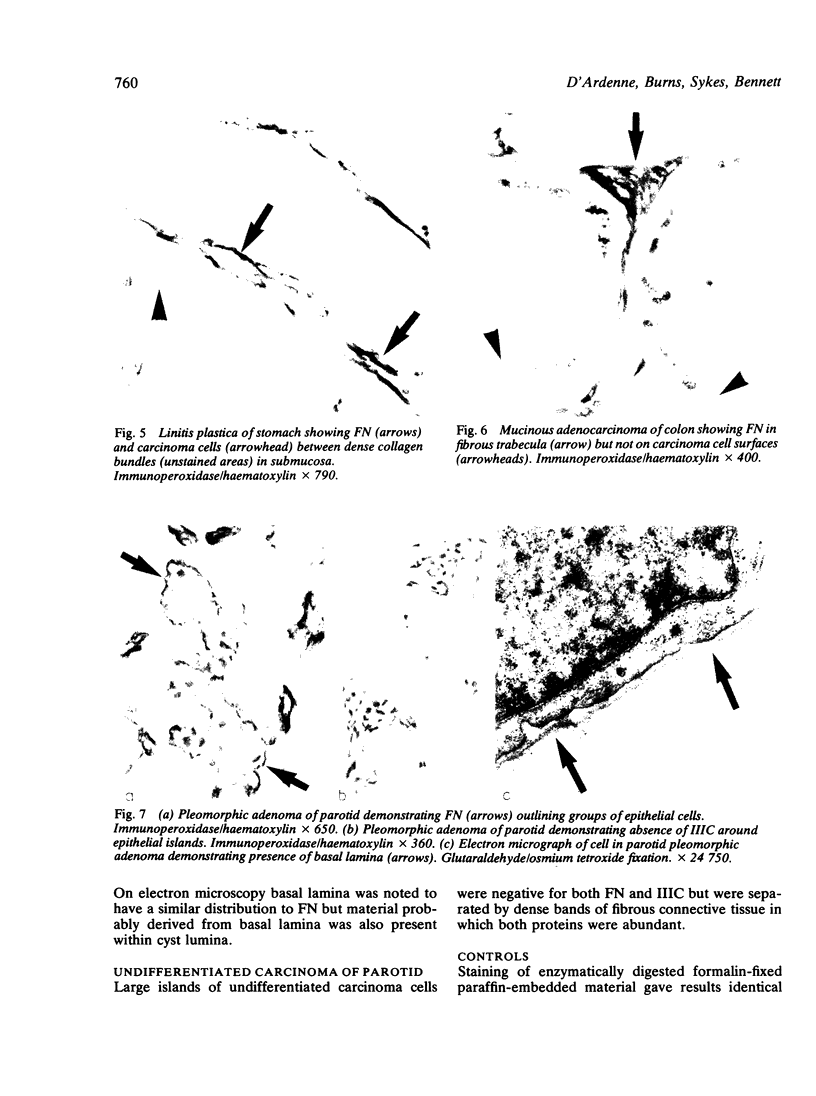
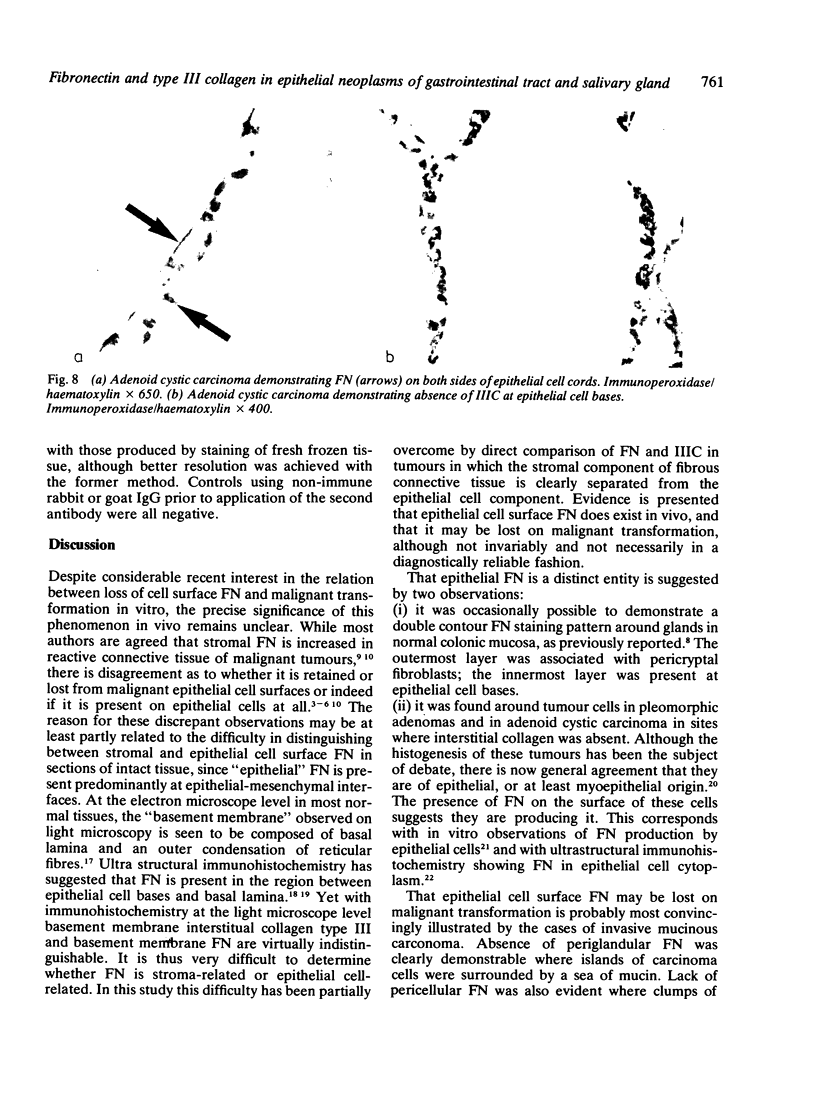
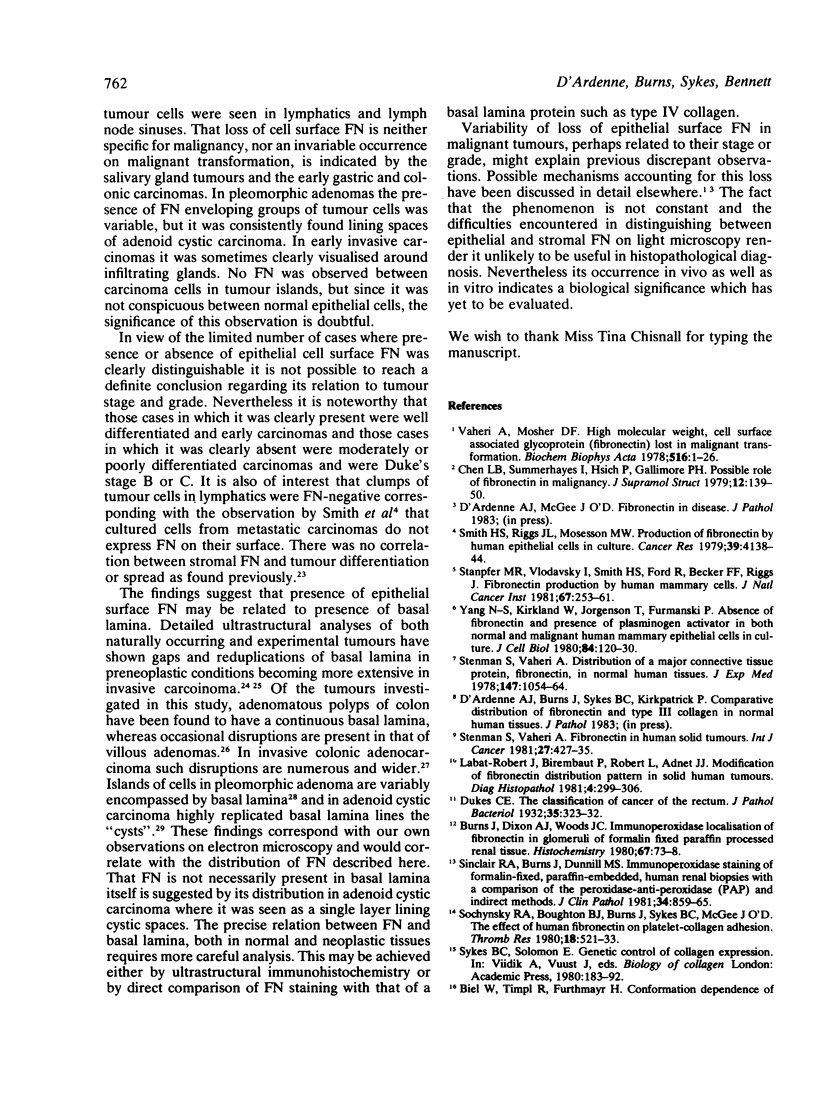
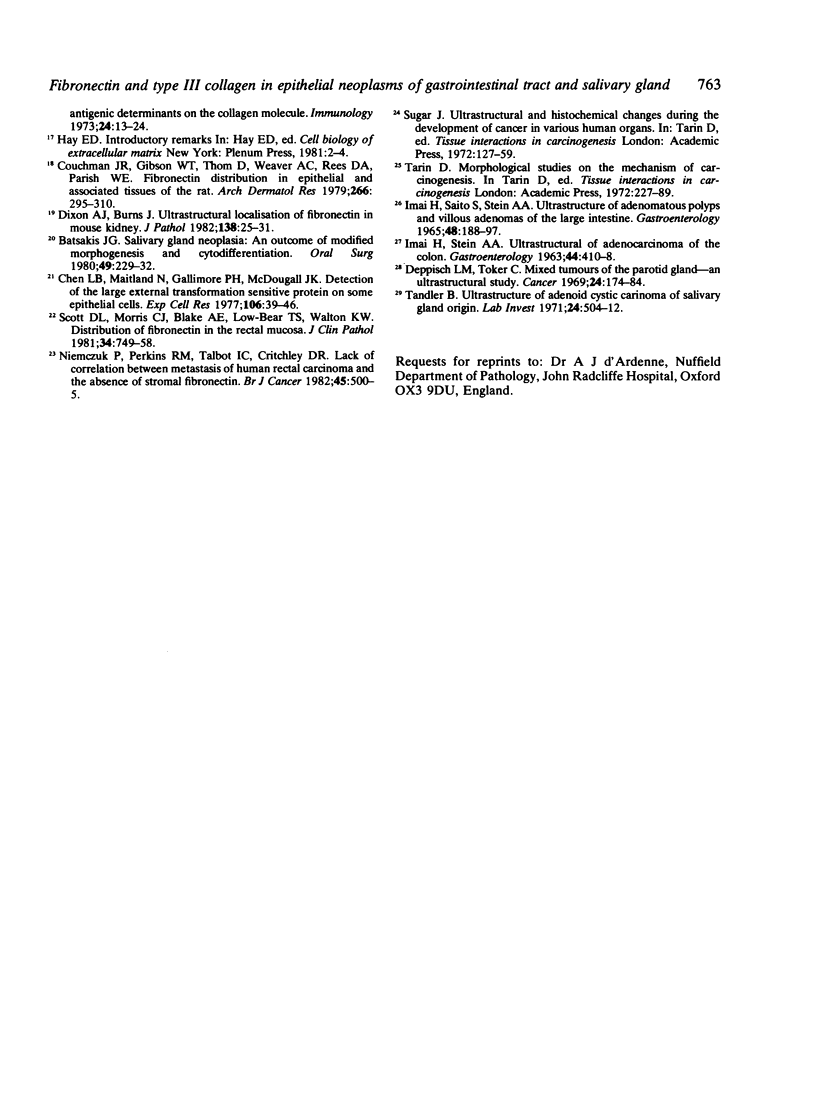
Images in this article
Selected References
These references are in PubMed. This may not be the complete list of references from this article.
- Batsakis J. G. Salivary gland neoplasia: an outcome of modified morphogenesis and cytodifferentiation. Oral Surg Oral Med Oral Pathol. 1980 Mar;49(3):229–232. doi: 10.1016/0030-4220(80)90053-5. [DOI] [PubMed] [Google Scholar]
- Beil W., Timpl R., Furthmayr H. Conformation dependence of antigenic determinants on the collagen molecule. Immunology. 1973 Jan;24(1):13–24. [PMC free article] [PubMed] [Google Scholar]
- Burns J., Dixon A. J., Woods J. C. Immunoperoxidase localisation of fibronectin in glomeruli of formalin fixed paraffin processed renal tissue. Histochemistry. 1980;67(1):73–78. doi: 10.1007/BF00490089. [DOI] [PubMed] [Google Scholar]
- Chen L. B., Maitland N., Gallimore P. H., McDougall J. K. Detection of the large external transformation-sensitive protein on some epithelial cells. Exp Cell Res. 1977 Apr;106(1):39–46. doi: 10.1016/0014-4827(77)90238-5. [DOI] [PubMed] [Google Scholar]
- Chen L. B., Summerhayes I., Hsieh P., Gallimore P. H. Possible role of fibronectin in malignancy. J Supramol Struct. 1979;12(1):139–150. doi: 10.1002/jss.400120111. [DOI] [PubMed] [Google Scholar]
- Couchman J. R., Gibson W. T., Thom D., Weaver A. C., Rees D. A., Parish W. E. Fibronectin distribution in epithelial and associated tissues of the rat. Arch Dermatol Res. 1979 Nov;266(3):295–310. doi: 10.1007/BF00418575. [DOI] [PubMed] [Google Scholar]
- Deppisch L. M., Toker C. Mixed tumors of the parotid gland. An ultrastructural study. Cancer. 1969 Jul;24(1):174–184. doi: 10.1002/1097-0142(196907)24:1<174::aid-cncr2820240122>3.0.co;2-x. [DOI] [PubMed] [Google Scholar]
- Dixon A. J., Burns J. Ultrastructural localisation of fibronectin in mouse kidney. J Pathol. 1982 Sep;138(1):25–31. doi: 10.1002/path.1711380104. [DOI] [PubMed] [Google Scholar]
- IMAI H., SAITO S., STEIN A. A. ULTRASTRUCTURE OF ADENOMATOUS POLYPS AND VILLOUS ADENOMAS OF THE LARGE INTESTINE. Gastroenterology. 1965 Feb;48:188–197. [PubMed] [Google Scholar]
- IMAI H., STEIN A. A. Ultrastructure of adenocarcinoma of the colon. Gastroenterology. 1963 Apr;44:410–418. [PubMed] [Google Scholar]
- Labat-Robert J., Birembaut P., Robert L., Adnet J. J. Modification of fibronectin distribution pattern in solid human tumours. Diagn Histopathol. 1981 Oct-Dec;4(4):299–306. [PubMed] [Google Scholar]
- Niemczuk P., Perkins R. M., Talbot I. C., Critchley D. R. Lack of correlation between metastasis of human rectal carcinoma and the absence of stromal fibronectin. Br J Cancer. 1982 Apr;45(4):500–505. doi: 10.1038/bjc.1982.85. [DOI] [PMC free article] [PubMed] [Google Scholar]
- Scott D. L., Morris C. J., Blake A. E., Low-Beer T. S., Walton K. W. Distribution of fibronectin in the rectal mucosa. J Clin Pathol. 1981 Jul;34(7):749–758. doi: 10.1136/jcp.34.7.749. [DOI] [PMC free article] [PubMed] [Google Scholar]
- Sinclair R. A., Burns J., Dunnill M. S. Immunoperoxidase staining of formalin-fixed, paraffin-embedded, human renal biopsies with a comparison of the peroxidase-antiperoxidase (PAP) and indirect methods. J Clin Pathol. 1981 Aug;34(8):859–865. doi: 10.1136/jcp.34.8.859. [DOI] [PMC free article] [PubMed] [Google Scholar]
- Smith H. S., Riggs J. L., Mosesson M. W. Production of fibronectin by human epithelial cells in culture. Cancer Res. 1979 Oct;39(10):4138–4144. [PubMed] [Google Scholar]
- Sochynsky R. A., Boughton B. J., Burns J., Sykes B. C., McGee J. O. The effect of human fibronectin on platelet-collagen adhesion. Thromb Res. 1980 May 1;18(3-4):521–533. doi: 10.1016/0049-3848(80)90348-5. [DOI] [PubMed] [Google Scholar]
- Stampfer M. R., Vlodavsky I., Smith H. S., Ford R., Becker F. F., Riggs J. Fibronectin production by human mammary cells. J Natl Cancer Inst. 1981 Aug;67(2):253–261. [PubMed] [Google Scholar]
- Stenman S., Vaheri A. Distribution of a major connective tissue protein, fibronectin, in normal human tissues. J Exp Med. 1978 Apr 1;147(4):1054–1064. doi: 10.1084/jem.147.4.1054. [DOI] [PMC free article] [PubMed] [Google Scholar]
- Stenman S., Vaheri A. Fibronectin in human solid tumors. Int J Cancer. 1981;27(4):427–435. doi: 10.1002/ijc.2910270403. [DOI] [PubMed] [Google Scholar]
- Tandler B. Ultrastructure of adenoid cystic carcinoma of salivary gland origin. Lab Invest. 1971 Jun;24(6):504–512. [PubMed] [Google Scholar]
- Vaheri A., Mosher D. F. High molecular weight, cell surface-associated glycoprotein (fibronectin) lost in malignant transformation. Biochim Biophys Acta. 1978 Sep 18;516(1):1–25. doi: 10.1016/0304-419x(78)90002-1. [DOI] [PubMed] [Google Scholar]
- Yang N. S., Kirkland W., Jorgensen T., Furmanski P. Absence of fibronectin and presence of plasminogen activator in both normal and malignant human mammary epithelial cells in culture. J Cell Biol. 1980 Jan;84(1):120–130. doi: 10.1083/jcb.84.1.120. [DOI] [PMC free article] [PubMed] [Google Scholar]





